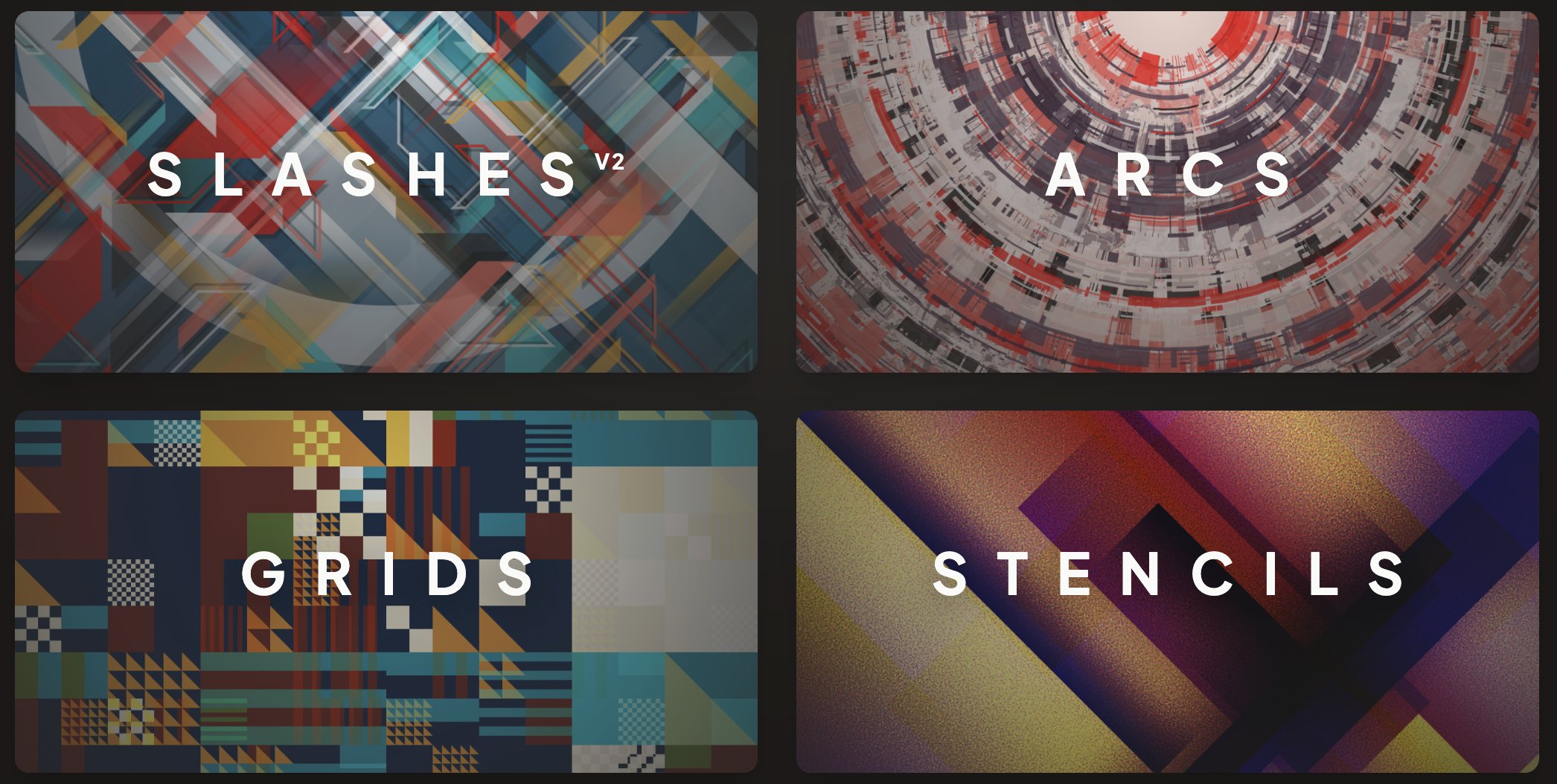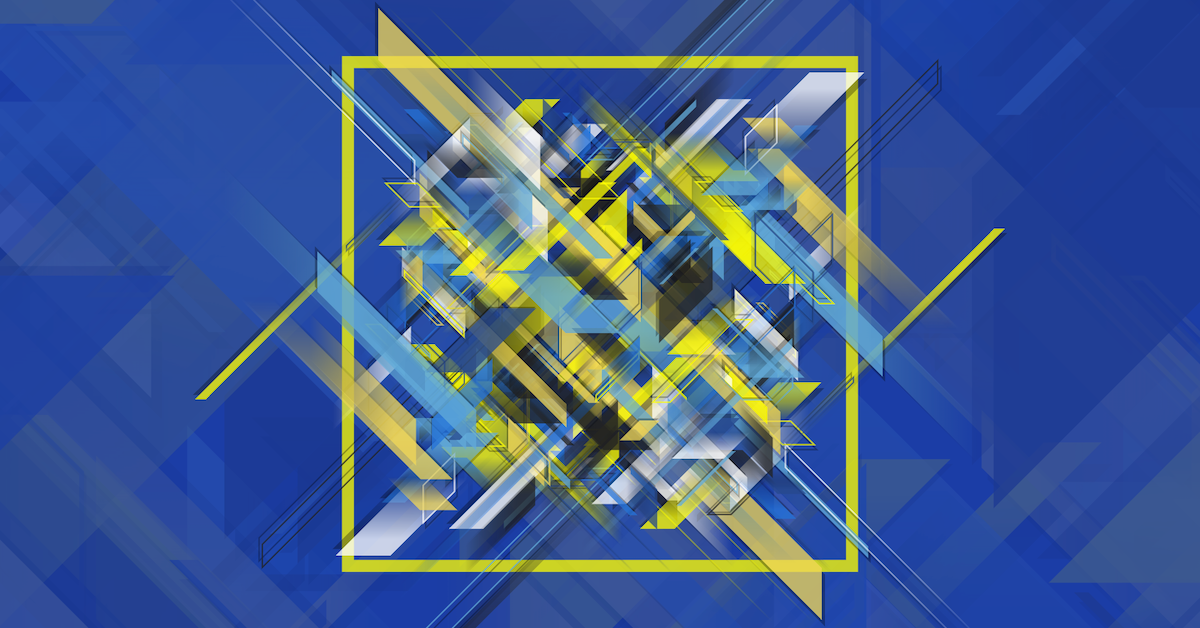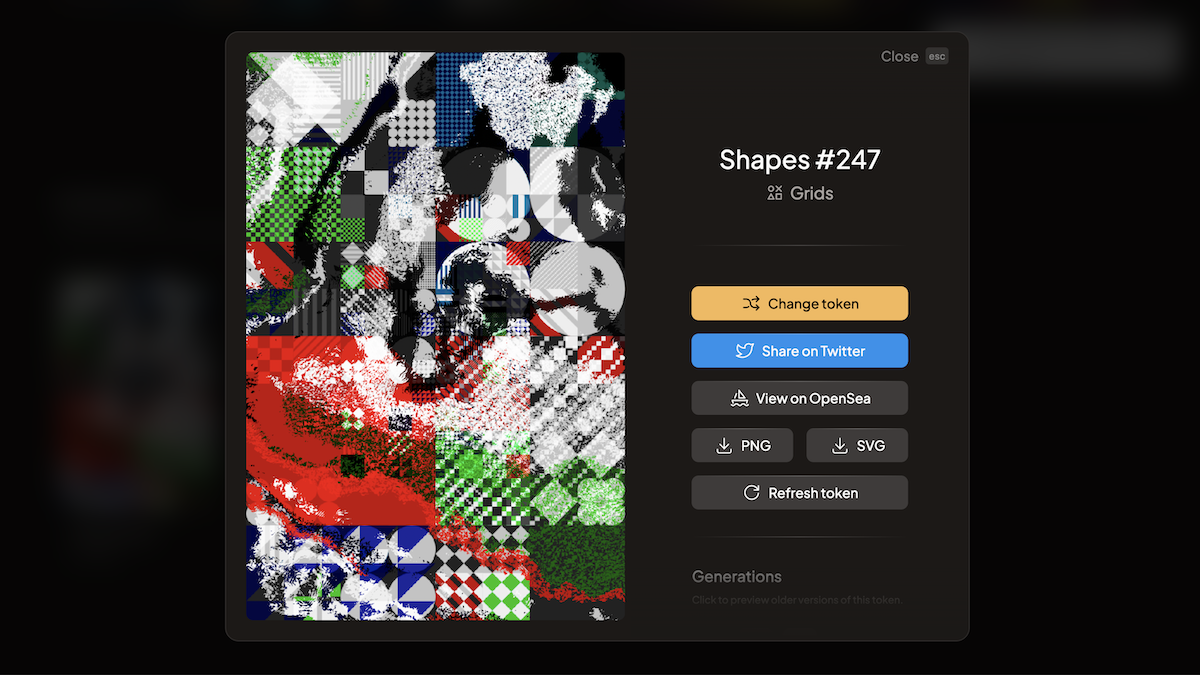SHAPES2048
Looking back after 1 year of SLASHES
by Clément Renaud & Makio135
makio135.com/shapes

Today marks the first anniversary of SLASHES. The collaboration between generative artist @Makio135 and creative developer @clemsos was meant to be a simple experiment to draw images using the Ethereum Virtual Machine. Its success (and failures) led to a larger project called SHAPES2048 that explores further the interactions between graphics, generation, curation and contract features.
Drawing contracts
Habits of torturing machines to create images die hard. When we first heard that there was a new “global computer” called Ethereum, we started to form ideas about how to use it for drawing. We made various attempts at rendering simple vector graphics using contracts. Finally, we decided that we may actually want to generate complex geometry and colors entirely within a single Ethereum contract call, without relying on any external source or web server. This approach - since popularized as in-chain rendering1 - had also the benefits of preventing images from going missing.
Working with all kinds of machines over the years, we perfected the craft of developing our own tools. We approached SLASHES by first draw an image in a text editor and then convert it to a contract. We started with a familiar shape - the slash - and built up the generator plus the required tooling, viewer, NFT contract, website, etc. The initial feedback for the release was so fantastic and overwhelming (more on that later) that we decided to continue to perfect our toolkit with a new project called SHAPES2048.

Along the way, we discovered more efficient techniques. They greatly improved the complexity and details of the graphics - while allowing us to stay within the sacrosanct gas limits of Ethereum. Instead of a single shape, the SHAPES project grew to include four different generators (Slashes V2, Arc, Grids and Stencils). Each of them being able to create unique pieces with each their own texture, appearance and features based on a single shape.
Contributive curation
Randomness brings beauty to generative art - but also frustration. The same algorithm often produces some pieces that really stand out. On the other hand, there are always a bunch of artworks that evolves from a bad seed, leaving the new owner with the unsatisfactory feeling that the algorithm could do better. The definite and “immutable” nature of blockchain technology makes things even worse as you seem often have only one single chance to get it right2.

The artist usually wrestles alone with the algorithm, while collectors are left to face the randomness. With SHAPES2048, we decided to join hands by adding in our contract the ability for the holder of any artwork to re-generate the piece any number of times - until the outcome felt satisfying. All versions of a token are kept in the contract, allowing collectors to change their mind and revert to previous attempts. This exploratory process also allows collectors to switch from a shape to another (e.g. from an Arc to a Stencil). Hand-picking the tokens creates a general process of curation for the entire collection, turning into a reflection of the collectors’ actions.
A year in the making
SLASHES was our first experiment with the constraints of the Solidity language and the Ethereum Virtual Machine. We certainly didn’t expect the project to mint out in a few minutes. The experience was so intense3 that we decided to conceive its current successor SHAPES2048. After half a year of existence, SHAPES2048 is now living its own life.
Until today, we have allowed collectors of the original SLASHES to exchange their tokens against newer SHAPES2048 using the contract or the dedicated website. During the next 6 months, you will still be able to participate in SHAPES2048 by minting your token - and picking your favorite version of it. Altogether there is a total of 2048 tokens with an potentially infinite number of variations.
Hope you will enjoy yours!
Thanks to Hugo Sainte-Marie for the help on the UI/UX designer.
For more, see SHAPES official page, SLASHES official page or the SLASHES collection on Opensea.
-
From https://0xchain.art/info : “On-chain because the advantage of having code, artwork and/or metadata on-chain creates permanence and immutability. They are permanently stored on the blockchain as long as the Ethereum network exists. Relying solely on the Ethereum Virtual Machine presents lots of constraints which stimulates creativity.” ↩
-
See this complete analysis of the SLASHES rarity for more on this ↩
-
During the release, we met 2 minor issues: a bug with in the display of the titles and a royalty fee considered too high (originally 15%, now 7%) by the herd of flippers that started to immediately dump the project minutes after its release. ↩